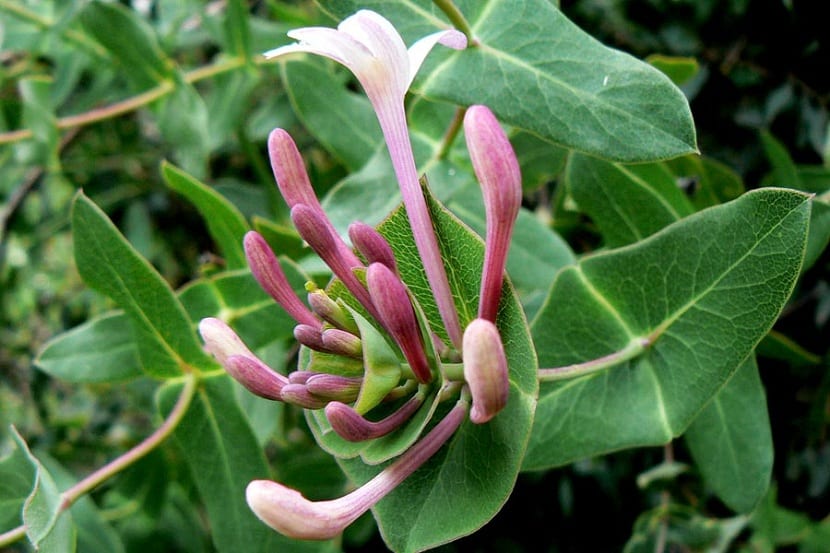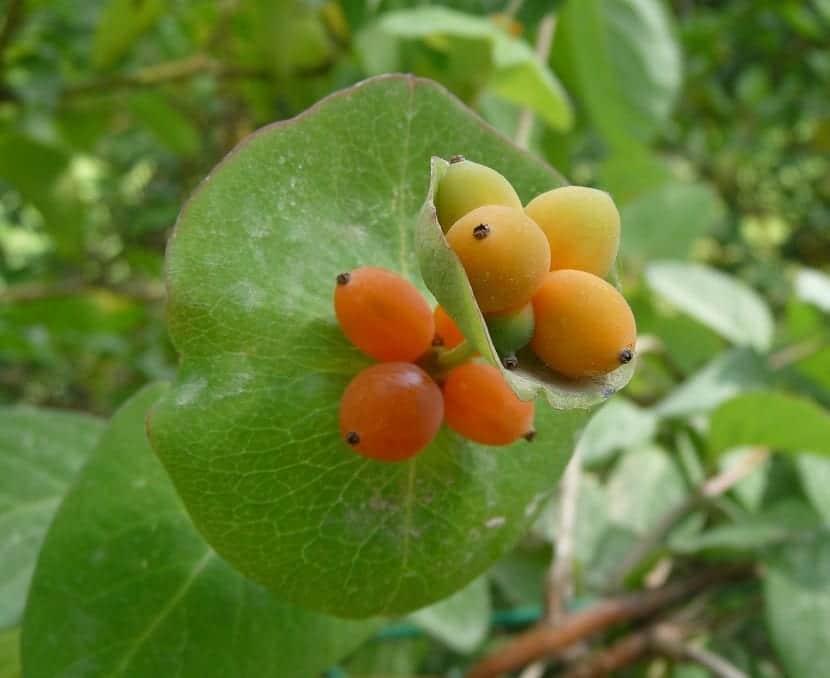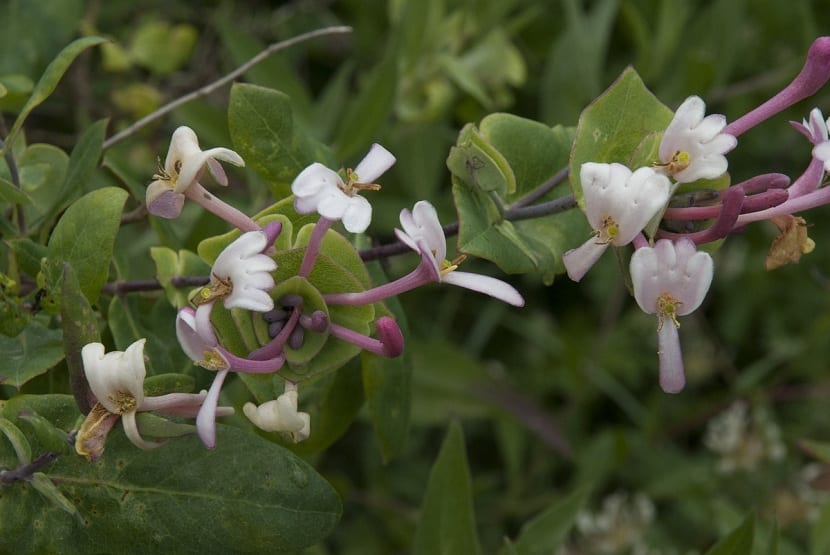
Today we have to talk about a plant that flourishes in our territories. It's about the mediterranean honeysuckle. Its scientific name is lonicera implexa and it is also known by other common names such as leggings and dedications of the Virgin for its curious shape. It is a type of shrub that has an evergreen and is a climber, so it is perfect to give an exotic touch to the walls of our garden or house.
Stay and read this article, because we are going to tell you everything you need to know of the Mediterranean honeysuckle, from all its characteristics to the care it requires.
Main characteristics of the lonicera implexa

This plant belongs to the Caprifoliaceae family and, as we have said before, it is a type of evergreen climbing shrub. It has glabrous stems and its leaves are leathery with an ovate shape. It has a large number of leaves in the upper part that are welded to its base from the stem and branches. Its flowers are reddish or yellowish, with some terminal inflorescences that can be presented in numbers ranging from 2 to 9.
The flowers are pubescent in type and they are shaped like little fingers. Hence comes the name of dedicated to the virgin. As for the fruit, they generate small reddish berries with an ovoid shape. In turn, the fruits contain cream-colored seeds inside.
We can meet the Mediterranean honeysuckle on all floors corresponding to the Mediterranean (that is, thermomediterranean, mesomediterranean and supramediterranean). They generally grow well in warmer climates like the semi-arid and subhumid. In Spain, it extends throughout the Mediterranean area and, for example in Murcia, it grows around more wooded and shrubby areas. It has also been seen in some regions of the interior of the Iberian Peninsula. The areas with the most populations of honeysuckle are in Murcia and, to a lesser extent, in the Balearic and Canary Islands.
The flowering time is from March to June and between the months of late summer and early autumn is when the fruits ripen.
Mediterranean honeysuckle uses

As we mentioned at the beginning of the article, these types of climbing plants are perfect for adding an exotic touch to our garden. It serves for improve the appearance of some structures such as walls, fences, pergolas, gates, etc. It is quite decorative and can attract the curiosity of more than one. It can be found in many areas as part of garden spaces, at intersections and in avenues that have been widened.
It's perfect for this kind of thing because has a great capacity for adaptation. In addition, because it is not a climber it is weaker if it is being pruned continuously. If we want the plant to serve purely for decoration, we must start pruning it as soon as possible. This is how we give it the shape we want, in addition to giving it enough size so that it does not grow too much. Thanks to this capacity for adaptation and tolerance to pruning, it can be seen as a shrub in some hedges placed on slopes, in medium and even in bushy beds together with other showy flowers such as the sage, lavender essence and asterisk.
It is a good plant for prevent over-spreading of an invasive plant well known in the world of gardening. The plant is lonicera implexa.
Necessary care of the lonicera implexa

We are going to describe the care that this plant needs to grow perfectly and give it the touch we need in our garden. The first thing is the location. Although it is capable of growing well in semi-shade and even shade, the best thing for her is exposure to the sun. If, for example, we put it in shadier places, it will be able to grow more or less the same, but it will not have as many flowers as if it does it in full sunlight.
It is able to withstand frosts that are not very long. If we see that the frosts last more than three days, it is best to put a plastic on the wall to reduce its cold during the night. As for the soil, it is capable of living in any soil, as long as it has good drainage and has sufficient organic matter. It is important that the ground does not puddle or the plant will weaken to death. Although it can live on almost any type of soil, prefers calcareous ones. This is where we will have the best growth rate and best flowers.
Being a plant that spreads throughout the Mediterranean, it is used to not having too abundant rainfall. Thus, it is somewhat drought resistant, but not too long. The best thing in these cases and, so as not to get our fingers caught, is to wait until the earth is dry to water (as long as it does not rain, of course). The most common is that we have to water twice a week in warmer seasons spring and summer.
It does not need a lot of compost. The ideal is a compost manure in the fall season. Pruning is best done after flowering, although it tolerates it quite well. It does not present problems of plagues and diseases.
Multiplication of the lonicera implexa

The best way to multiply this plant is by seeds. The seeds are obtained from the berries that have as a fruit that we have mentioned in the description. They are extracted from the inside of the fruits and we wash them. Then we let them dry and screen them. Some studies affirm that different results can be obtained, depending on the treatment we do to the seeds.
Some claim that if it is stratified in wet sand at 4 degrees for several months before sowing in the spring months, good results are achieved. Others think that it is better to sow it and maintain a stable temperature between 25 and 30 degrees for 5 days and then have them 2 degrees for several months in total darkness.
For now, the most accepted is that germination method that makes subject the seeds to scarification in water for a few days and then they maintain a temperature range between 16 and 26 degrees. This is how you get better results in multiplication.
Hope these tips help you enjoy your lonicera implexa and its special touch.
That it does not present pests or diseases is totally false, I have one in my yard and if there is any plague or disease, rest assured that it will go to the Lonicera implexa head-on, it catches everything. Being a wild plant, when you put it in a patio, or in a garden, it does not have the necessary fauna around it to naturally control the pests and diseases that affect it. For now ... in a year, the cottony cochineal has affected me 3 times (this year it has entered strongly), 2 times the red spider and now the powdery mildew has relieved them ... I have decided to leave it to its free will ... if it survives well and if not also…. it is clear that a patio is not the most suitable place for this magnificent plant: c